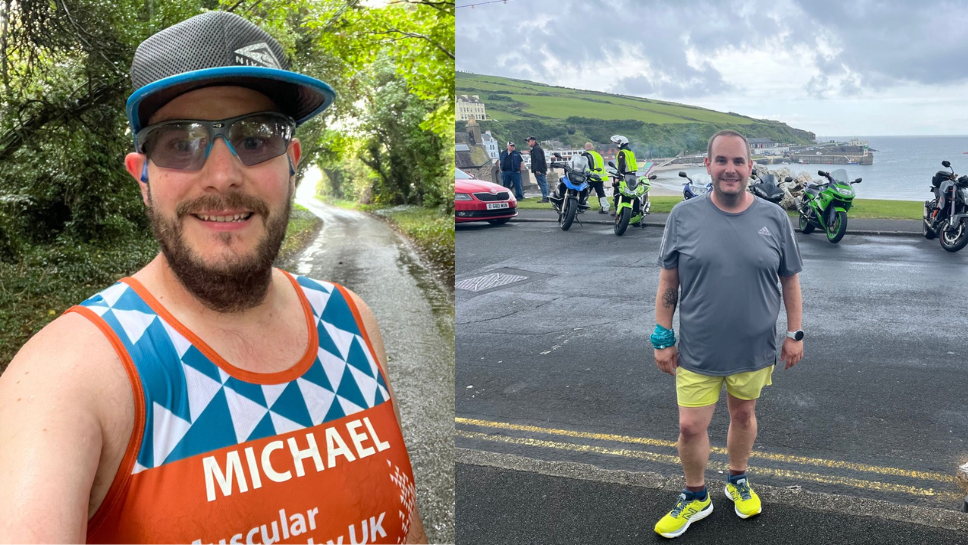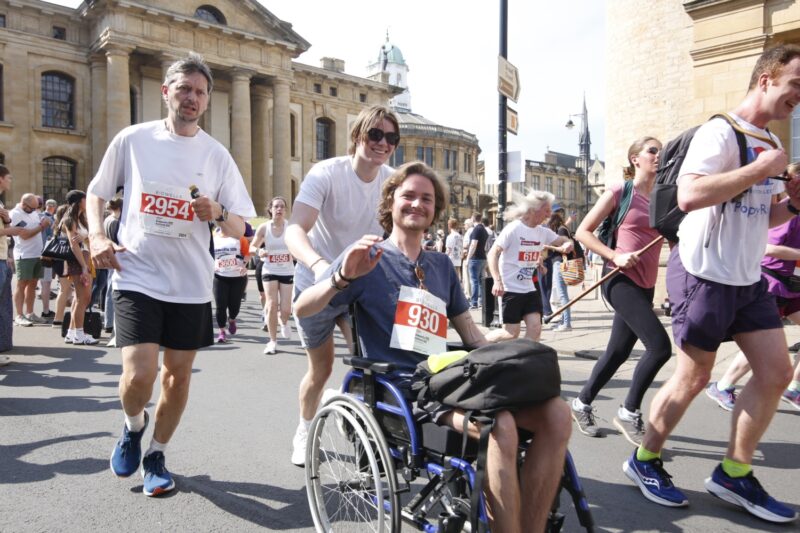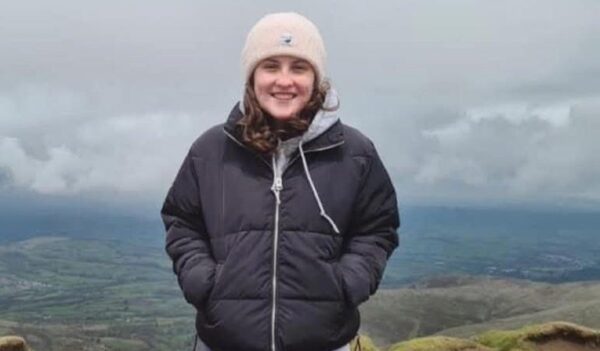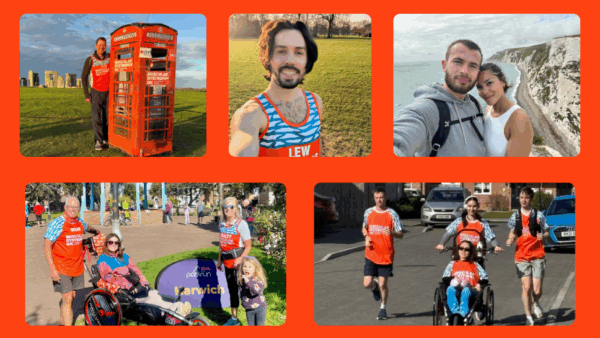Growing up, Michael was told to avoid strenuous activities, like PE and running, because he has a rare form of Becker muscular dystrophy. As an adult, he gained weight which made it difficult to walk short distances, so he started using a powered wheelchair. Now, aged 39, Michael will be running and walking 26.2 miles at the London Marathon as part of Muscular Dystrophy UK’s #TeamOrange. He shares his journey from using a powered wheelchair to becoming physically active.
‘I thought I wouldn’t be able to run after being told for years, I couldn’t do this.’ – Michael, who has Becker muscular dystrophy, takes on the London Marathon

I was diagnosed with Becker muscular dystrophy when I was around four or five years old. At this age, I was still unable to walk properly unaided, I kept stumbling and would tire easily when doing activities, so they did numerous tests to try and find out why this was happening.
When they diagnosed my condition, I went to special schools so that I could have regular physiotherapy sessions to try and strengthen my leg muscles. Throughout primary and secondary school, I was told not to do any strenuous activities, so I wasn’t allowed to take part in PE lessons and had to watch from the side-lines.
At medical appointments, nobody could ever tell me my prognosis because Becker muscular dystrophy is rare and not the same for everyone.
Becoming less mobile
As I got older, I did less and less physical activity. I gained lots of weight; by the time I was 34, I weighed over 21 stone, and I was struggling to walk more than a few hundred metres.
At my physiotherapy appointments, they said they thought I was becoming less mobile due to my condition and that I should consider using a wheelchair.
A few months after this, I rolled my ankle and it became unstable to walk on. I started using a manual wheelchair to get around, until my physio advised that I should consider a powered wheelchair as I didn’t really have the strength in my arms to propel myself very far. It all happened very quickly and in 2017 I had a powered wheelchair and barely walked at all outside of my home.
Encouragement to get active
In early 2018, I had my yearly appointment with my consultant. He was shocked and surprised to see me in a wheelchair. After a lengthy discussion, we decided my priority should be to lose weight and try to avoid using my wheelchair when I only had to walk short distances.
He said there was no reason why I should have had such a dramatic loss of strength and so encouraged me to exercise more generally.
Starting the Couch to 5k program
After a year or so, I was able to walk unaided, I’d lost a few pounds and movement was much easier. A friend suggested that I should try the Couch to 5k training programme and just take it slow. I thought I wouldn’t be able to run, so I dismissed this.
But after some encouragement, eventually I gave in and tried the first week of the programme. It hurt so much, and I was so tired, but I later felt amazing.
I was so proud that I was able to run, after being told for years, I couldn’t do this.
As I moved through the programme, it got easier and I completed it in late 2019. At this point, I’d lost six stone and I felt amazing. I could run for five minutes at a time without everything hurting.
Taking on the London Marathon
I entered London Marathon ballot with four other friends as we thought we’ll never get in but wanted a rejection top! Out of the five of us, I was the only person to get a place! I was chuffed because I had always wanted to run and walk the distance and the London Marathon is my dream marathon to try and complete.
I’m nervous about getting to the finish line and there being nobody else around, but I’m looking forward to the atmosphere on the day and just having a good time!
Running for Muscular Dystrophy UK
I’ve always followed Muscular Dystrophy UK (MDUK)’s research, especially into my specific condition given that it’s so rare and different for everyone. Raising awareness about my condition and MDUK will hopefully help others believe that they don’t need to be limited by their diagnosis.
I hope MDUK can raise funds to continue its research into all dystrophies and to provide more information for newly diagnosed people. Back when I was first diagnosed, my condition was even rarer and less well-known.
While there is currently no cure available for Becker muscular dystrophy, MDUK is supporting ongoing research into treatments and ways of increasing or maintaining muscle mass and strength in muscular dystrophies.
You can visit Michael’s fundraising page to show your support. Inspired by Michael’s London Marathon efforts? Apply now to join #TeamOrange at the 2023 London Marathon in April next year.


